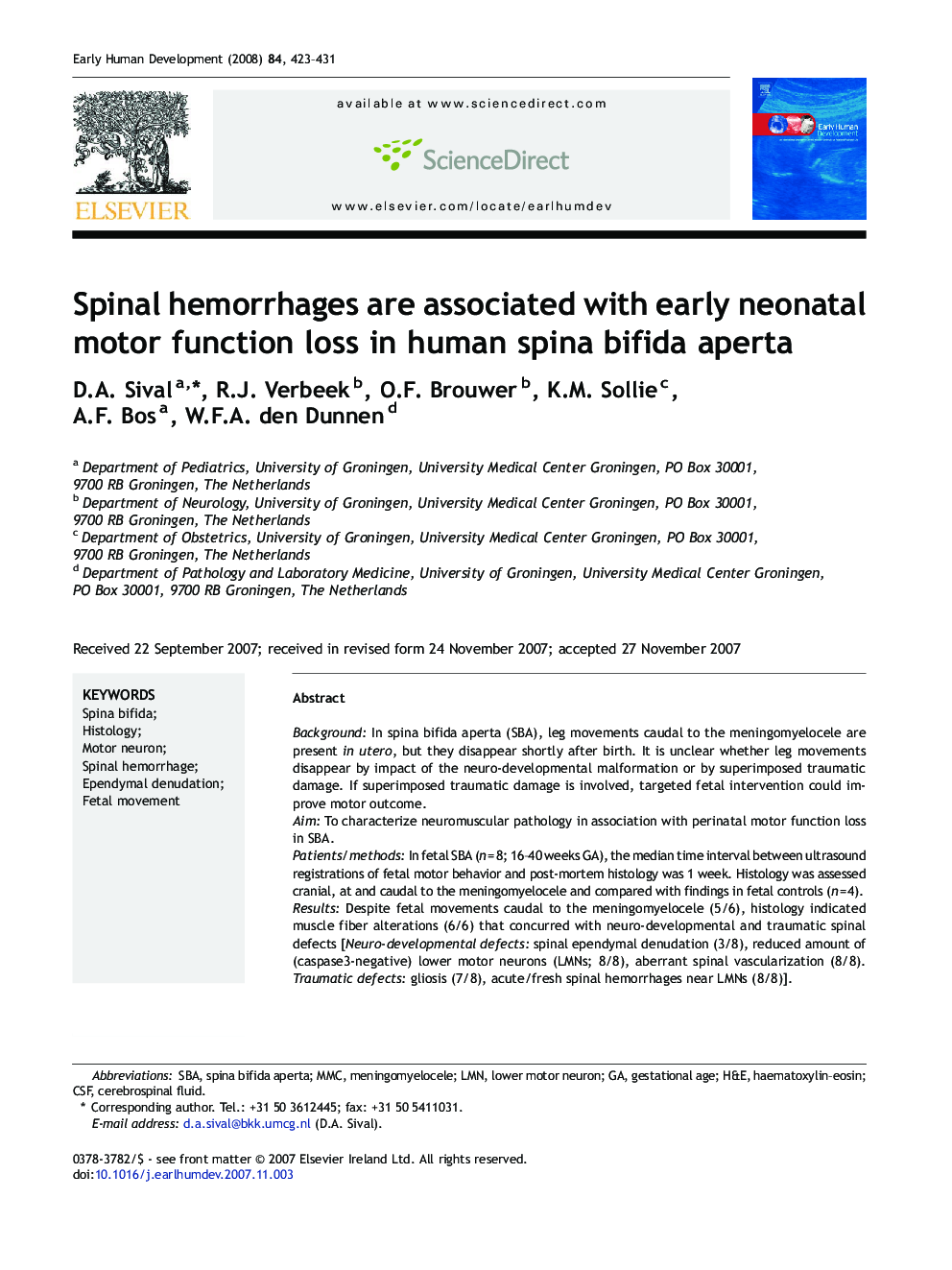| Article ID | Journal | Published Year | Pages | File Type |
|---|---|---|---|---|
| 3917107 | Early Human Development | 2008 | 9 Pages |
BackgroundIn spina bifida aperta (SBA), leg movements caudal to the meningomyelocele are present in utero, but they disappear shortly after birth. It is unclear whether leg movements disappear by impact of the neuro-developmental malformation or by superimposed traumatic damage. If superimposed traumatic damage is involved, targeted fetal intervention could improve motor outcome.AimTo characterize neuromuscular pathology in association with perinatal motor function loss in SBA.Patients/methodsIn fetal SBA (n = 8; 16–40 weeks GA), the median time interval between ultrasound registrations of fetal motor behavior and post-mortem histology was 1 week. Histology was assessed cranial, at and caudal to the meningomyelocele and compared with findings in fetal controls (n = 4).ResultsDespite fetal movements caudal to the meningomyelocele (5/6), histology indicated muscle fiber alterations (6/6) that concurred with neuro-developmental and traumatic spinal defects [Neuro-developmental defects: spinal ependymal denudation (3/8), reduced amount of (caspase3-negative) lower motor neurons (LMNs; 8/8), aberrant spinal vascularization (8/8). Traumatic defects: gliosis (7/8), acute/fresh spinal hemorrhages near LMNs (8/8)].ConclusionIn all delivered SBA patients, recent spinal hemorrhages were superimposed upon pre-existing defects. If early therapeutic strategies can prevent these superimposed secondary spinal hemorrhages, motor outcome may improve.
